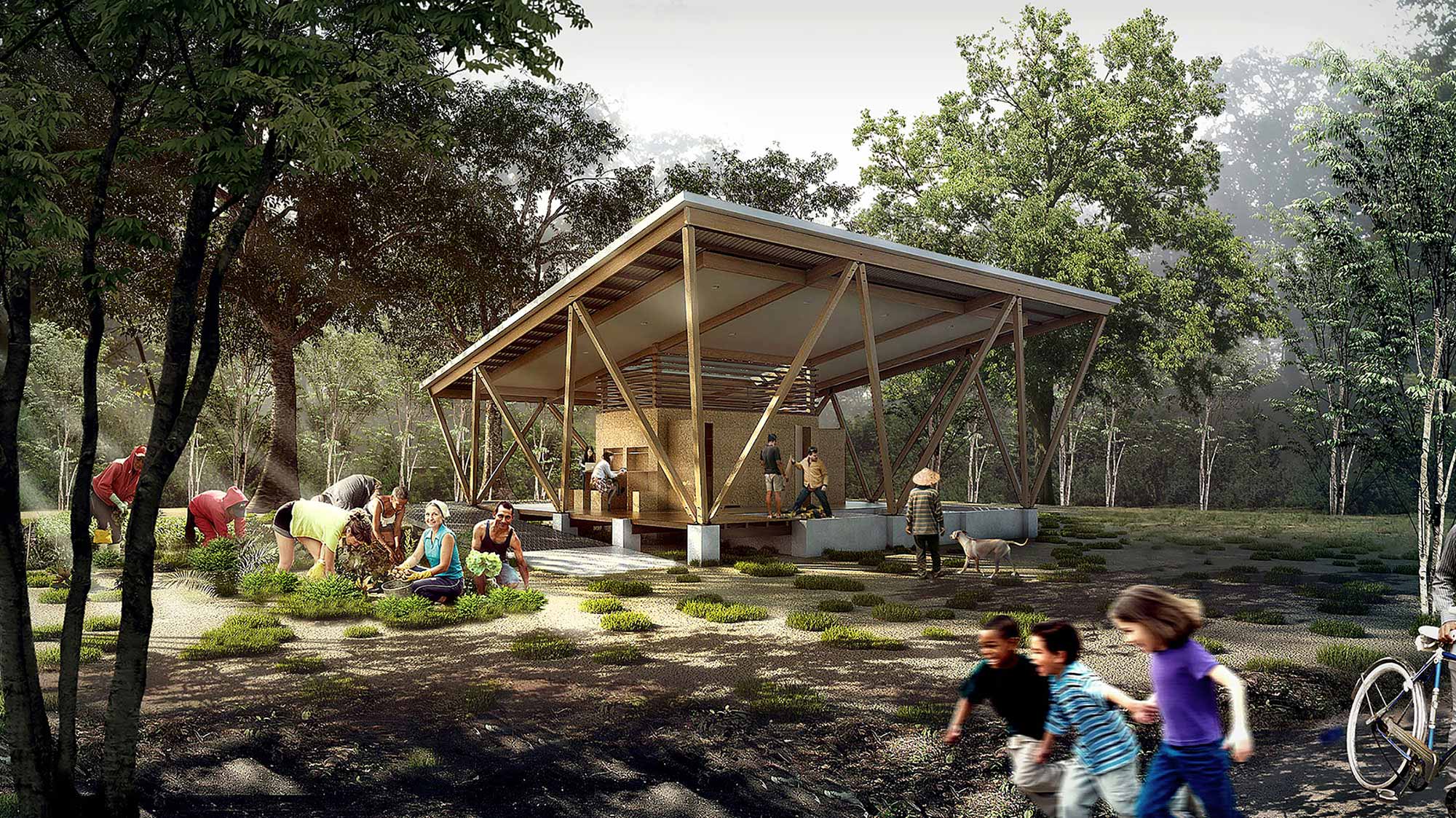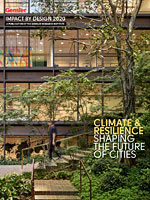Materials vary in their impact. Cement used to make concrete accounts for nearly 10% of all emissions worldwide. It has been said that if the cement industry were a country, it would be the third-largest emitter in the world. Wood, however, has relatively low embodied energy — as much as five times less than steel. Because trees absorb CO2 while alive, wood also offers the additional benefit of storing carbon in perpetuity, preventing it from being released into the atmosphere.

The Recycling and Community Center of Chira uses a modular building structure that supports easy fabrication and construction using local materials such as recycled glass for the windows and recycled Tetra Pak cartons for the roof.
The lifespans of materials often depend on how they are used in an environment. The longer that materials are used in buildings, the more time they have to amortize. Furniture and interior finishes tend to be replaced every few years, while structural elements can last as long as the building itself. High-churn projects, such as retail stores, can potentially be far more wasteful with materials, so choosing products that can be removed and reused easily is key. Additionally, obtaining materials from local or regional sources can significantly reduce construction-related emissions.
In Impact by Design 2020 we introduce Strategies for Climate Resilience: a collection of six major areas that have the greatest potential for positive climate impact in the coming years.
